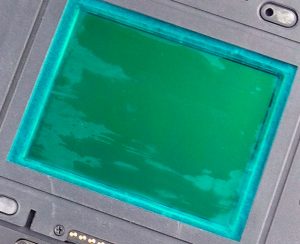edouard
Member
I have a CFV-50 CCD back (bought new in 2012), that still works fine but shows more and more hot pixels (with ACR, via phocus they are ~removed) this is likely a sign of aging; is it worth servicing it?
I see on hasselblad website
 www.hasselblad.com
CCD / CMOS CLEANING
www.hasselblad.com
CCD / CMOS CLEANING
A CCD / CMOS cleaning includes a number of operations to ensure that the camera performance is in accordance with factory specifications – no matter the age of the camera. This is what we do:
Firstly, the IR-filter which protects the CCD / CMOS is removed. The position of the CCD / CMOS can then be measured and, if necessary, adjusted.
A focus calibration is followed by very careful cleaning of the CCD / CMOS with compressed air, cleaning fluid and tissues.
The unit is then mounted on a test bench. A test shot is made through an illuminated piece of opal glass mounted in the filter thread of the lens with the lens focus setting at infinity. The unprocessed RAW-file is inspected on a monitor to ensure that that there is no residue of grease, fluid or dust on the sensor.
A mounting seal is attached and another test shot is made and inspected. The IR-filter is now unwrapped, cleaned on both surfaces and mounted.
The camera then undergoes a full factory test to ensure that the camera still performs according to the factory specifications – no matter the age of the camera. If needed, extra calibrations will be done, or parts will be replaced to ensure correct performance. You will be contacted if the cost of such replacements makes the service charge exceed the current cost estimate limit.
(I know "CLEANING" is not rejuvenating, but from the description 'look they could do more than just clean)
has anybody here tried that? I mean, in general: servicing a working back ?
(like you would regularly do with a mechanical watch )
)
I'm having fun with my "new" X1D but would like to keep my old CFV CCD in good shape
(btw does anybody knows what happen when such sensor dies? it's unlikely that Hasselblad has a stock of old CCDs ?)
I see on hasselblad website
Repairs
A CCD / CMOS cleaning includes a number of operations to ensure that the camera performance is in accordance with factory specifications – no matter the age of the camera. This is what we do:
Firstly, the IR-filter which protects the CCD / CMOS is removed. The position of the CCD / CMOS can then be measured and, if necessary, adjusted.
A focus calibration is followed by very careful cleaning of the CCD / CMOS with compressed air, cleaning fluid and tissues.
The unit is then mounted on a test bench. A test shot is made through an illuminated piece of opal glass mounted in the filter thread of the lens with the lens focus setting at infinity. The unprocessed RAW-file is inspected on a monitor to ensure that that there is no residue of grease, fluid or dust on the sensor.
A mounting seal is attached and another test shot is made and inspected. The IR-filter is now unwrapped, cleaned on both surfaces and mounted.
The camera then undergoes a full factory test to ensure that the camera still performs according to the factory specifications – no matter the age of the camera. If needed, extra calibrations will be done, or parts will be replaced to ensure correct performance. You will be contacted if the cost of such replacements makes the service charge exceed the current cost estimate limit.
(I know "CLEANING" is not rejuvenating, but from the description 'look they could do more than just clean)
has anybody here tried that? I mean, in general: servicing a working back ?
(like you would regularly do with a mechanical watch
I'm having fun with my "new" X1D but would like to keep my old CFV CCD in good shape
(btw does anybody knows what happen when such sensor dies? it's unlikely that Hasselblad has a stock of old CCDs ?)


